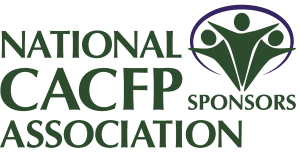Meal Pattern Minute: Lactose-Free Milk
February 9, 2024
In the Child and Adult Care Food Program (CACFP), providers play a pivotal role in catering to diverse dietary needs while ensuring compliance with nutritional guidelines. However, sometimes choosing the food items that are safe is not always easy to determine. For example, if a child comes in with a milk allergy, you might start searching for products and come across lactose-free milk. Would this be considered a milk-free product to use?
Listen in as Isabel Ramos-Lebron, MS, RDN, LD, discusses what lactose-free milk is and is not. This will help you make more informed decisions when choosing lactose-free milk. Also, a medical statement should always be kept on file for every individual in your care with an allergy to help you serve healthy and safe meals and snacks.
More information on where to find this answer is listed below.
- Crediting Fluid Milk in the Child Nutrition Programs Tip Sheet
- You will notice in this resource that lactose-free milk is listed under fluid milk and not under milk substitutes. This indicates this type of milk comes from cow’s milk. Lactose-free milk is creditable in the CACFP. Make sure to serve the correct fat type and flavored or unflavored lactose-free milk to the appropriate age group. View other fluid milks that fall under cow’s milk below.
- Fluid milk refers to pasteurized fat-free (skim) milk; low-fat (1%) milk; reduced-fat (2%) milk; whole milk; lactose-free milk; lactose-reduced milk; cultured milk, such as cultured buttermilk, cultured kefir milk, and cultured acidophilus milk; acidified milk, such as acidified kefir milk and acidified acidophilus milk; and Ultra High Temperature (UHT) milk: all of which meet State and local standards for such milk.
Webinars
Check out the National CACFP Sponsors Association Learning Center for more insights on food allergens.
- Dairy Meal Modifications
-
- Learn how to adjust your menu when a participant has a dairy allergy. Receive training on how to identify foods containing dairy, how to modify recipes, and what dairy products can be replaced to meet the fluid milk component.
-
- Common Allergens and Reading the Food Label
- Discover the top nine food allergens and learn to recognize what food products contain these. Get a better understanding of how to read the food label to identify and avoid food allergens.
Try one of these dairy-free recipes to add more variety to your dairy-free menu.
Want to share this video on Facebook? Click here, and then you'll find three icons along the right side of the screen. Click on the arrow, and you'll be able to choose whether you want to share it to your feed or to a group. You can also include a short note about why this Meal Pattern Minute is so important! Click on the "Post" button when you're finished, and that's it!
